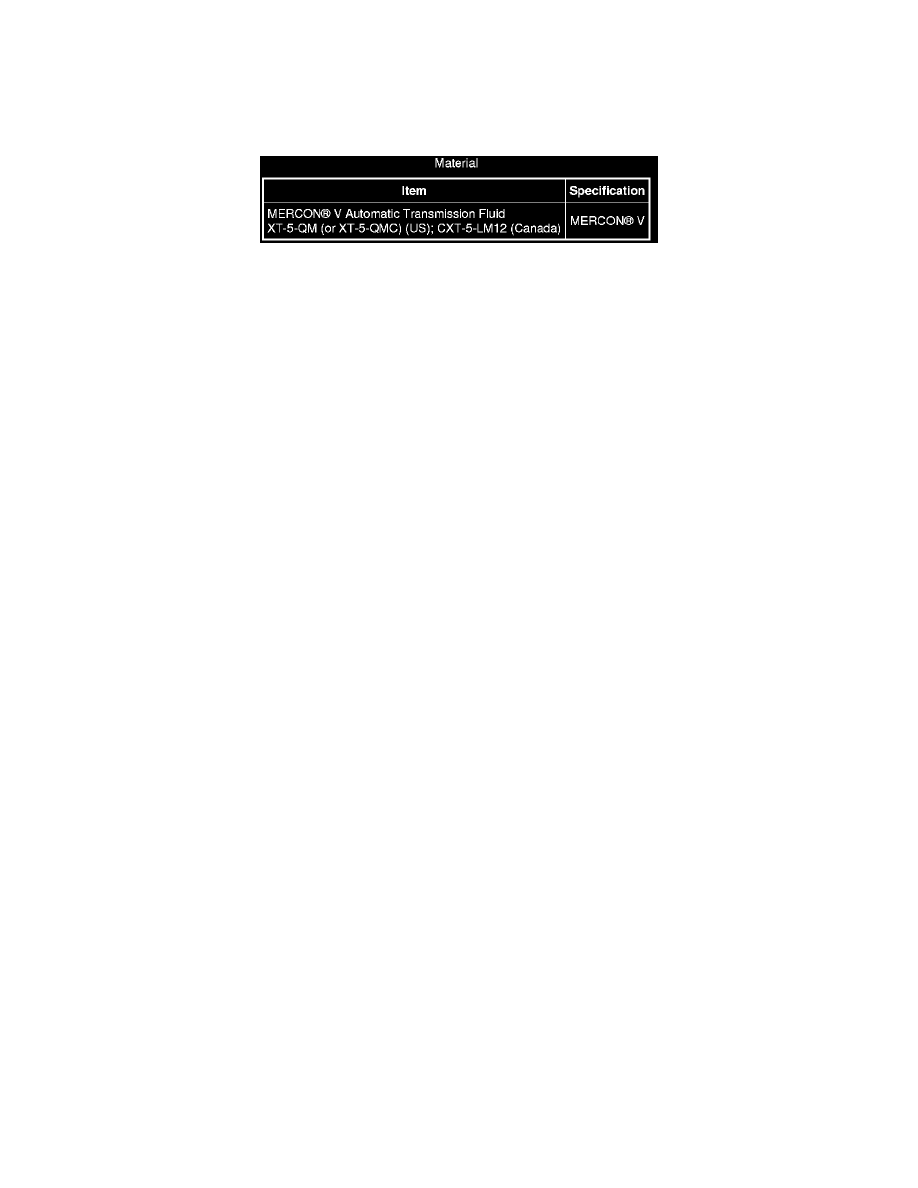Ranger 4WD V6-4.0L (2009)

Transmission Cooler: Component Tests and General Diagnostics
5R44E and 5R55E
Transmission Fluid Cooler
NOTICE: Whenever a transmission has been disassembled to install new parts or the installation of a new or remanufactured transmission has
been carried out, new transmission fluid coolers, either in-tank, auxiliary or Oil-To-Air (OTA), if equipped, will need to be installed. Using a
suitable torque converter/fluid cooler cleaner, clean and backflush the transmission fluid cooler tubes or damage to the new or remanufactured
transmission may occur.
NOTICE: Use only transmission fluid specified for this transmission. Do not use supplemental fluid additives, treatments or cleaning agent. The
use of these materials may affect transmission operation and result in internal damage to the transmission.
NOTE: Cleaning and backflushing the transmission fluid cooling system, along with following all the normal cleaning and inspection procedures as
outlined during disassembly and reassembly, will keep contamination from re-entering the transmission and causing a repeat repair.
When internal wear or damage has occurred in the transmission, metal particles, clutch plate material or band material may have been carried into the
transmission fluid cooler. These contaminants are a major cause of recurring transmission concerns and must be removed from the system before the
transmission is put back in use.
When evidence of transmission fluid contamination (for example, metal particles, clutch plate material or band material) is found in the cooling system,
the Transmission Fluid Cooler Flow Test should be carried out.
Transmission Fluid Cooler Flow Test
NOTE: If the transmission fluid cooler fails the Transmission Fluid Cooler Flow Test, a new transmission fluid cooler should be installed and the fluid
cooler tubes should be cleaned and flushed.
NOTE: The following components should be checked and should be within specifications prior to carrying out this test:
-
Engine idle, refer to the Computers and Control Systems Information.
-
Check transmission fluid level, refer to Preliminary Inspection See: Transmission Control Systems/Testing and Inspection/Initial Inspection and
Diagnostic Overview/Preliminary Inspection.
-
Line pressure, refer to Special Testing Procedures See: Transmission Control Systems/Testing and Inspection/Component Tests and General
Diagnostics/Special Testing Procedures/Special Testing Procedures.
-
Transmission must be at normal operation temperature, 66°C-77°C (150°F-170°F).
1. Remove transmission fluid level indicator from transmission fluid filler tube.
2. Place funnel in transmission fluid filler tube.
3. Position the vehicle on a hoist. Refer to Maintenance/Service and Repair and place suitable safety stands under the vehicle.
4. Prior to carrying out the Transmission Fluid Cooler Flow Test, check to see if the vehicle is equipped with an in-line transmission fluid filter. If the
vehicle is equipped with an in-line transmission fluid filter it must be removed and discarded prior to carrying out the Transmission Fluid Cooler
Flow Test and any system flushing.
5. Remove the cooler return tube (top fitting) from the fitting on the transmission case.
6. Connect one end of a hose to the cooler return tube and route the other end of the hose up to a point where it can be inserted into the funnel at the
transmission fluid filler tube.
7. Remove the safety stands and lower the vehicle. Insert the end of the hose into the funnel.
8. Start the engine and run it at idle with the transmission in PARK position.
9. Once a steady flow of transmission fluid (without air bubbles) is observed, remove the hose from the funnel and place the hose in a measuring
container for 15 seconds. After 15 seconds, place the hose back into the funnel and turn the engine off. Measure the amount of transmission fluid
